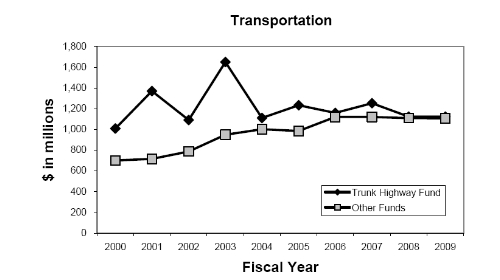Perhaps George Bush reads the polls over at KSTP. Yesterday he told Reps. James Oberstar (D-MN) and Don Young (R-AK) that he would veto any gas-tax increase Congress passes until it reforms the way it appropriates money for transportation:
President Bush said Thursday that he would be opposed to any steps by Congress to increasing the gasoline tax to raise revenues for national bridge repairs in the wake of Minneapolis’ bridge collapse.
“Before we raise taxes, which could affect economic growth, I would strongly urge the Congress to examine how they set priorities,” Bush said, accusing lawmakers of focusing on their own parochial concerns above such national concerns as bridge conditions. …
The president’s comments came in response to an idea proposed by Rep. Don Young, R-Alaska, a member of the House Transportation and Infrastructure Committee, who said the country has as many as 500 bridges of the same design as the one that collapsed in Minneapolis.
It wasn’t just Young. Oberstar, whose pork projects on transportation tend to focus on bike paths, also has called for a tax increase to address potentially failing bridges. Young mentions 500 of these as critical, having the same design as the St. Anthony Bridge. Neither of them nor their colleagues had any concern over this issue in 2005, when they larded down the transportation bill with 6,300 earmarks, including 147 for Minnesota alone — and none of them apparently addressing failing bridges.
In fact, we can now take a look to see how these two Congressmen voted on anti-pork measures. Oberstar does better than 105 Representatives who got a zero on this RePork Card (84 of them Democrats), with a whopping 2%. Forty-nine times out of 50, Oberstar voted to keep earmarks viable and secret, the exact kind of poor prioritization of which Bush speaks. Don Young didn’t do much better, coming in at 6% on anti-pork legislation.
Minnesota has a $2.2 billion annual budget for transportation. We still don’t know why the bridge failed. We can’t very well start spending money on solutions if we don’t understand the cause, and we can’t tell whether we allocate enough money for transportation until we know what would have prevented this collapse. We should inspect all of the Warren truss bridges immediately to see if we find any problems, but we don’t need a 5-cent gas-tax increase to do $5 million worth of inspections — and that’s doubling the $5,000 average rate for bridge inspections in Minnesota. Let’s quit demanding more money for a bad appropriation process until we know what really happened.
UPDATE: Five hundred bridge inspection at $10,000 each is $5 million. Another case of editing through a couple lines of thought and winding up with drivel. Thanks to Bryan for pointing out one of the series of goofs that led to the wrong number.

